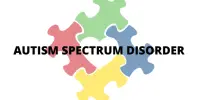Gender bias has a significant negative impact on the medical diagnosis and healthcare quality. It can result in significant diagnostic delays, as well as misdiagnosis, and even death. Women and other marginalized genders are disproportionately affected by gender bias. It, however, has a negative impact on everyone and contributes to global health inequity.
According to a new study, network science can be used to eliminate race and gender bias in clinical settings. The findings suggest that managing clinician peer networks is an effective new way to ensure safer, more equitable health care for women and minorities.
A study from the University of Pennsylvania published today in Nature Communications provides compelling evidence that network science can be used to eliminate race and gender bias in clinical settings. The study, led by Professor Damon Centola of the Annenberg School for Communication and the School of Engineering and Applied Science, proposes a novel approach to ensuring safer, more equitable health care for women and minorities by managing clinician peer networks.
Using an experimental design, researchers demonstrated that clinicians who initially displayed significant race and gender bias in their treatment of a clinical case could be persuaded to change their clinical recommendations to be bias-free.
We discovered that by changing the structure of clinicians’ information-sharing networks, we could change doctors’ biased perceptions of their patient’s clinical information. To put it simply, doctors tend to think differently in networks than they do alone.
Professor Damon Centola
“We discovered that by changing the structure of clinicians’ information-sharing networks, we could change doctors’ biased perceptions of their patient’s clinical information,” says Centola, who also directs the Annenberg School’s Network Dynamics Group and is a Senior Fellow of Health Economics at the Leonard Davis Institute. “To put it simply, doctors tend to think differently in networks than they do alone.”
The researchers asked 840 clinicians to watch a video of a patient giving a clinical history detailing risk factors for heart disease as part of the experiment. The patient was portrayed by a white male actor for half of the clinicians and a black female actor for the other half. Aside from that, the videos were identical.
Based on the patient’s information, clinicians chose one of four treatment recommendations: an unsafe option, an under-treatment option, the correct guideline-recommended option, or an over-treatment option. According to preliminary findings, a black female patient was 49 percent more likely than a white male patient to be discharged. The white male patient, on the other hand, was 78% more likely than the Black female patient to be referred to the emergency department. The findings confirmed a well-documented fact about American health care: widespread racial and gender bias in medicine.

To mitigate these effects, the clinicians were divided into two groups: experimental and control. The control groups watched the video alone, with no input from other participants, and had the opportunity to revise their recommendations. The medical bias in the control groups remained unchanged. In the experimental condition, the clinicians were linked into large, anonymous peer networks with 40 other clinicians. Each participant was able to see the evaluations made by their network peers and had the option to change their recommendations.
The peer network effects were astounding. Not only did the networks improve clinical accuracy, but they also removed treatment disparities from clinicians’ recommendations, resulting in white male and black female patients receiving guideline-recommended care at the same rate.
“We often think of doctors making rational decisions based on medical evidence,” Centola says, “but medical bias is frequently rooted in professional norms.” Changing the networks of clinicians can alter these norms, resulting in higher-quality treatment recommendations for minority patients.”
Surprisingly, the findings also revealed that the network approach to bias reduction improved overall care quality. Researchers discovered that the rate of over-treatment – such as recommending an unnecessary, invasive procedure – increased for both patients in the control groups, but decreased significantly for both patients in the experimental groups.
The increasing use of telemedicine and online clinical support networks presents a promising opportunity for new information-sharing technologies to aid clinical decision-making. This network-based approach to eliminating bias could be used in other medical settings where there are known to be significant racial and gender disparities, such as childbirth and acute pain management, as well as mental health and urgent care decisions for COVID-19-related illness.
“The future of medicine is using network technologies to improve health care,” Centola says. “Our next step will be to collaborate with hospital systems across the country to implement effective peer-networking programs.”
















